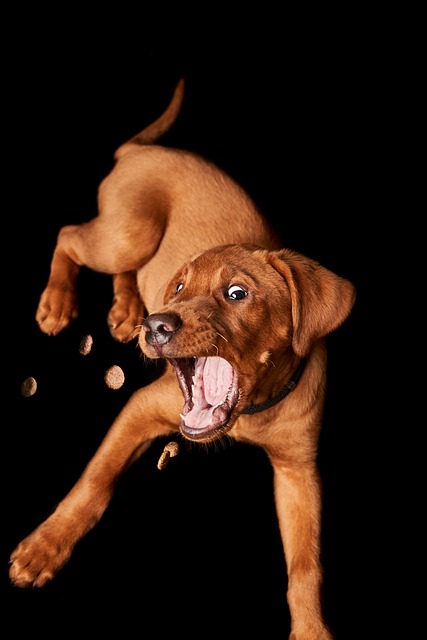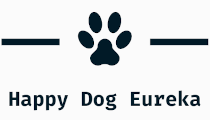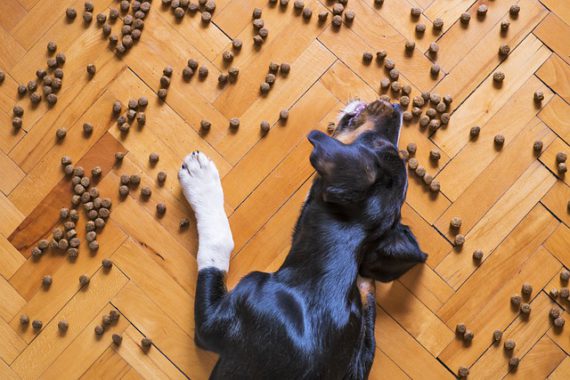Like many owners you may be giving your dog free treats. You may be used to giving some leftovers from the table. You know that your dog is a great foodie and he is never happier than when you give him a piece of sugar or chocolate. After all, if you have a dog, it’s to share moments where everyone is happy together. So is there a real danger to your dog?
For starters, this is what we mean by free treat. It’s the fact of suring your dog nibbles outside of your bowl. Snacking can be the tasting of dog treats but also of our leftovers and non-essential treats. Here are the 5 essential rules to know for your dog’s well-being!

1 Overweight
Free treat is often associated with being overweight in dogs. We can say that this is rightly the case. Indeed, the latest French study conducted by veterinarians dating back to 2018, shows that nearly a quarter of family dogs are overweight. Yet more than half of these dog owners don’t know it or think it doesn’t matter. And even some prefer it when their dog is coated! It’s a dangerous look for the dog’s health.
Because overweight in dogs has potentially fatal effects just like in humans. Obesity causes many disorders, symptoms and diseases such as:
- respiratory problems
- a crushing of the trachea
- stress-related problems
- cardiovascular risks
- joint diseases such as herniated disc, dysplasia, ligament rupture
- allergies or skin problems
- Incontinence
- liver problem
- diabetes problem
- aggressiveness due to all his pain
An experiment was conducted in two groups of labradors. One group was maintained at an optimal weight (depending on the individuals) or about 27 kg for these subjects. The other group with 10kg more. The life expectancy for the latter was less than 4 years.
2 Learning bad behaviour
The free treat can also become the dog’s opportunistic moment. In education, we have many owners who complain that their dog is constantly begging. Sometimes these same dogs will be more than insistent by jumping, pinging, barking at their owner until he gives in.
The dog then understands that he only has to wait longer or be insistent to be rewarded. Of course, this behavior is taught to him unintentionally. The dog can’t guess that what he’s doing infuriates his human because he’s still rewarded in the end.
Unfortunately, the food reward is very strong for the dog. So he learns twice as fast. The first thing to do is to deliberately ignore the bad behaviour your dog produces, and then pay more attention to the behavior you like. This prevents you from learning inappropriate behaviour.
Example: You have a piece of chicken in your dog’s hands that you bark so much that you give it to him. Next time, it will bark even more and intensify these behaviors to get chicken again. Whereas if you had ignored this behavior from the start, your dog would have offered a calmer behavior. Which you could then have rewarded.

3 Dog’s food cycle
Your dog is not made to eat all day. Indeed, it takes about 6 to 8 hours for the diet to make its way through the digestive system. This can even take up to 14 hours for dry food such as croquettes. If you give regular treats during the day, your dog is constantly digesting. These organs are never stopped working. The digestion time will also vary depending on:
- The food given (raw, croquettes, boxes, etc.) and its quality
- The size of the dog
- The age of the dog
It should not be forgotten that a puppy before his 6 months does not necessarily have the necessary muscles to hold back. Therefore, if you give him treats all the time, he will have even more trouble holding back. So these are accidents beyond his own control. It will be the same for an old dog. The more naturally digestible the food, the less digestive problems your dog will have. Because the organs are in work all day, this significantly increases caloric intake and leads to weight gain.

4 Dog that becomes difficult
Some dogs will also become difficult and no longer want to eat their bowl, because they will finally wait for you to give them something else like your leftovers and treats. They will make you their “cocker eyes” and you will feel very sad for him. Giving in will then be easy for you, lest your dog no longer eat and lose too much weight.
So, if you’re used to adding something more appetizing to his bowl, you’ll have reinforced your dog’s desire to wait for that “thing” every time. To avoid falling into the trap, don’t add anything to his bowl. Check first if the food you give it is right for him. If it’s good quality. If your dog does not finish his bowl, and the risk of illness is ruled out, then it is not a tragedy. Like us, dogs will not have the same appetite every day. He will eat better the following days, don’t panic.
5 Digestive disorders
Finally, taking free treats or snacks throughout the day can cause digestive problems in your dog. The main disorders are:
- Vomiting
- Diarrhea
- Constipation
Your dog could then have a big drop in energy and no longer have morals. His behavior will be adaptive to his condition. That is, he could behaving in behaviours that he would not normally have because he is in pain. Under the pain some dogs growl or bite. They’re not mean or dangerous. They are simply suffering. They can’t understand what’s happening to them. And don’t always understand your good intentions. Consult a veterinarian if in doubt. It’s very important.
Choosing the right way
Remember, then, that if you use the treat, it is better to know your dog and choose it according to its health and weight. So choose well:
- when: to take care of yourself while you are away, to help give a drug, to learn new things, for education.
- how: especially do not give if the dog is clamoring or is excited. If not you reward this excitement unintentionally.
- What: the choice of the treat is very important. Indeed, you cannot give the same diet as we do to your dog. It is therefore important to avoid giving it leftover tables, especially not to give sweet or salty foods and to ban chocolate.
The Friandises
How I told you in another article. The choice of treats should be considered according to several criteria such as:
- Your dog’s tastes
- his age
- of his health
- of its business
- the size of your dog
You now have plenty of keys in hand so you don’t fall into the “trap” of the free treat. Of course, you can please your dog. But, if your dog has unwanted behaviors for food, it is worth looking at how you behave with him in those moments. For if you punish him because he claims but he has taken this habit because of you (even unintentionally), then you punish him for having misexplained things to him yourself. This amounts to punishing him when it is not his fault!

